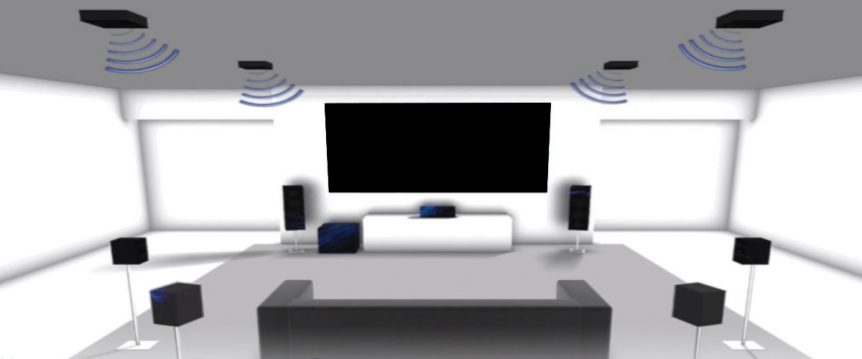Like every experience you have, every experience is personal, and every experience can have a WOW factor, or is just pleasant. Audio is no different, and when you sit down to watch that favourite movie, but you need to use the remote to raise or lower the volume because the action noise gets too loud, but when they talk its so quiet, something is not quite right!
But do you really need to go down the 4D (or even 5D) 7.2.4 dolby surround atmos path, or are these just hyped up words simply to get you to buy more? I’m going to go through what the various audio configurations are, so that you can make your own mind up, or at least not be 100% in the dark when you talk to the AV audio specialist.
Let’s start with those numbers. The difference between mono and stereo should be clear, which is either a single speaker where all the audio comes down one path from a single direction. Stereo being 2 paths, 2 speakers allowing for audio to appear either more on your left or your right assuming you stand yourself between the 2 speakers. The next step up was 4 speakers, normally 2 placed up “forward” and 2 towards the “rear” of the room, assuming you are sitting on a couch in the middle with a TV in front of you. This was called Quadraphonic and first appeared in 1969!
Dolby showed up around 1982 when they developed a method of “transporting” 5.1 over the audio channels on your recorded tape. 5.1 refers to 6 speakers (5+1) where you have the 4 speakers mentioned above fwd L & R, rear L & R. The 5th speaker is a center forward (normally placed just below the TV) and the “.1” is a sub-woofer, a special speaker emitting the low frequencies giving the audio a fuller deeper experience. As this is normally not sensed from a particular direction it is hidden away somewhere in the room preferably near the TV.
Why 5 speakers? Well the center forward is normally dedicated to the voice, the audio that you want to come from the direction that you are looking, i.e. the person speaking on the TV. The 4 other speakers make the surround sound, the crowd of the stadium roaring up in excitement, the explosion that fills the room, and being speakers placed in the 4 corners you can make it feel that the sound comes from a separate direction, of in the rear distance, on your left. This allows you decipher the voice audio better and not sit there with the volume control in your hand!
So are we a movie geek who wants more?, well let’s add 2 more speaker (or 3!) 7.1 or 7.2. Starting to realise how the numbers are made up? For the “7” we add 2 more surround speakers, and note that these are all at ear height normally (for that level experience). These 2 extra speakers are placed beside the sofa directly left and right. So now we have 1 Center Speaker just below the TV, 2 Forward speakers left & right, 2 Side speakers left & right and 2 rear speakers left & right. Oh, the “.2” well we put another sub-woofer in just to fill the deeper sounds even more, now you can place one on the left side of the room and one on the right. Do note though that neither Dolby or DTS specifically code an extra sub-woofer channel, it’s the manufacturers who want to sell you an extra sub-woofer, and it’s the audio experience that you want to achieve that should decide!
Now comes Atmos, Dolby Atmos, and there is DTS:X and AURO-3D, the same idea from different manufacturers. Here we add another number, 7.1.2 (or 7.1.4). These are ceiling mounted speakers, to give you that overhead experience. That aeroplane flying overhead! Either just 2 speakers, top left & right, or 4 speakers, top forward left & right and rear left & right.
The fact that you now have speakers placed at your ear height and speakers up above creates what the Dolby and DTS like to call object based (or 3D) audio, the ability by specific mixing of the audio channels to move an audio sound around the room.
In the shops you can buy “atmos” speakers which are not mounted in the ceiling, right? If you look closer these speakers, you’ll see that they are generically pointed upwards, with the idea that they focus the audio at the ceiling for it then to be reflected back down onto the listener, generically speaking, bouncing the sound of the ceiling.
Well now you have 12 speakers, generically placed, anything else to think about? Simple rules include that speakers should be placed equal distance from the listener (i.e. don’t place the left speaker 3m away and the right 1m, as the listener will hear one before the other distorting the sound effect that the cinema director created for you). Also, the walls shouldn’t be reflective, as it allows sounds to bounce, also disturbing the experience especially created by the director.
This article was written by Tim Gorter, teletechnics.com. Tim specialises in troubleshooting support and analytic maintenance. He also provides full shoreside support to vessels running without an ETO on board, providing full remote monitoring or just simple advice.


